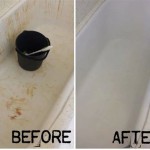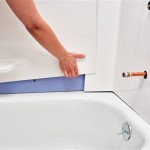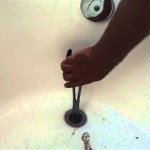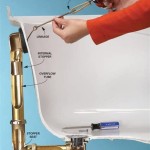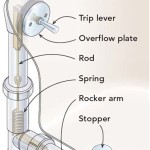How to Reseal a Bathtub Drain
A leaky bathtub drain can be a frustrating and messy problem. Over time, the sealant around the drain can deteriorate, allowing water to seep into the subfloor and potentially causing mold growth or structural damage. Fortunately, resealing a bathtub drain is a relatively simple DIY project that can save you money on a plumber's visit. This article will guide you through the process, step by step, ensuring you have a watertight and functional drain.
1. Prepare the Bathtub and Drain
Before you begin, it's crucial to ensure a clean and dry work area. Start by draining the bathtub entirely and allow it to dry completely. Next, remove any existing sealant around the drain. To do this, you can use a utility knife or a putty knife to carefully scrape away the old sealant. Be mindful not to damage the surrounding tub surface. If there are any stubborn remnants of sealant, you can apply a sealant remover. Follow the manufacturer's instructions carefully.
Once the old sealant is removed, thoroughly clean the drain and the surrounding area. A mild cleaner and a damp cloth will suffice. Ensure the drain is free of any debris or grime. Now, you're ready to tackle the application of fresh sealant.
2. Apply the Sealant
For this task, you'll need a high-quality bathtub sealant. There are two main types: silicone sealant and polyurethane sealant. Silicone sealant is typically more flexible and water-resistant, while polyurethane sealant is generally stronger and more durable. Choose the type that best suits your needs and the specific conditions of your bathtub. For example, if you have a cast iron tub, polyurethane sealant may be a superior choice due to its strength.
Once you have the right sealant, follow these steps for application:
- Apply the sealant evenly around the drain. Use a sealant applicator gun to apply the sealant in a smooth, continuous bead around the drain. Make sure the bead is even and covers the entire surface where the drain meets the tub.
- Smooth the sealant. Use a damp finger or a smoothing tool to press the sealant firmly into the gap between the drain and the tub. Remove any excess sealant. The goal is to create a smooth, even surface that is free of air bubbles.
- Allow the sealant to cure. Give the sealant ample time to dry and cure. Refer to the manufacturer's instructions for the specific drying time. Avoid using the bathtub until the sealant is fully cured.
During the curing process, it's essential to avoid disturbing the sealant. Any movement or pressure on the sealant could cause it to become uneven or incomplete, compromising its effectiveness.
3. Finishing Touches
When the sealant is completely cured, you can give the drain a final inspection. Look for any gaps or imperfections. If you see any, apply a small amount of sealant to fill them. Allow this additional sealant to cure as well.
After the sealant has cured, you can test the drain for leaks. Fill the bathtub with water and allow it to drain. Observe carefully for any signs of leaks or dripping. If the sealant has been properly applied, the drain should be completely watertight.
Resealing a bathtub drain is a simple and cost-effective way to prevent leaks and ensure a smooth, functional bathroom. By following these steps, you can confidently tackle this project yourself and avoid the expense of a professional plumber. Remember to choose high-quality sealant, apply it correctly, and allow it to cure completely for optimal results.

Bathtub Reglazing How To Replace A Drain Easy Diy Install On Reglazed Tub

Easy Replacement Of A Bathtub Drain

6 Steps To Eliminate Bathtub Drain Leaking

How To Caulk A Shower Drain 11 Steps With Pictures Wikihow

How To Replace A Bathtub Drain

How To Remove Broken Bathtub Drain Without Special Removal Tool Cross Members

Do I Need To Seal Or Caulk A Bathtub Drain

Replacing A Tub Drain Bathtub Removal And Replacement

How To Replace Bathtub Drain Stopper With A Lift And Turn Diy

How To Fix The Enamel On A Bathtub Stop Rust Formation


